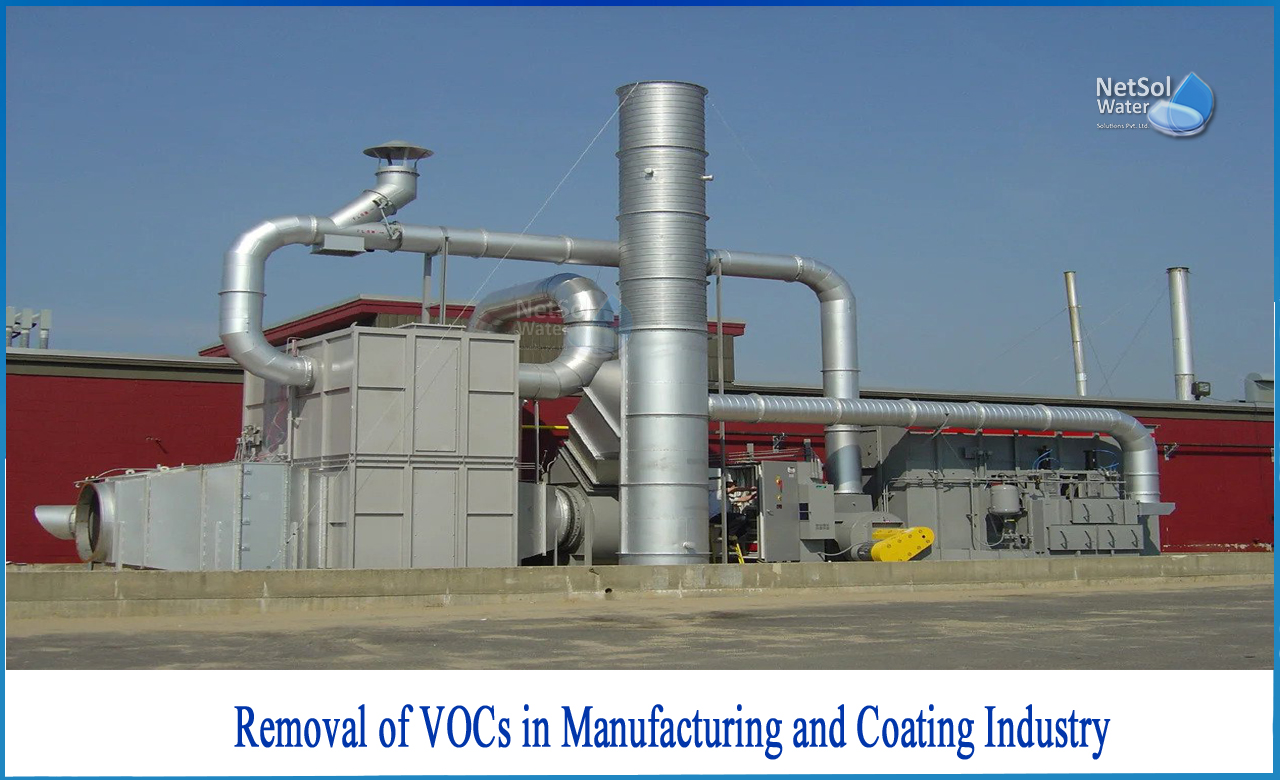Overview
Although there are many chemical compounds on the planet, the term volatility is mainly connected with carbon molecules, often known as organic chemicals. There are a lot of volatile organic compounds (VOC) in the area of organic compounds. Hydrocarbons, ethers, halo compounds, alcohols, esters, and even acids are among these chemicals. Small molecules have a high level of volatility. In nature, certain tiny inorganic compounds are also volatile.
How to remove VOC in Manufacturing and Coating Industry?
Several of the aforementioned organic compounds are used as solvents in many businesses for activities such as polish, varnish, paints, and glues. Solvent applications have also been frequently employed in paint and coating industries, as well as automotive paint booths in workshops. These solvents must have a low boiling point or should be volatile. Otherwise, the drying process will take longer, and it will not be an appropriate choice for the purpose.
To minimise the cost of these products, producers may utilise extremely dangerous volatile ingredients that can cause significant asphyxia, health, and environmental risks throughout the manufacturing process. Several nitrogen-containing chemicals are also utilised in this area. In nature, these solvents are likely to be cancer-causing chemicals. Furthermore, low molecular weight compounds with a size of less than 2 nanometres are thought to be the most volatile.
As a result, eliminating these VOCs from industry is the first and most important breaking point.
Parameters of adsorption media
The following parameters are used to curate filtration units or adsorption media:
1. The filter's stability
2. Effectiveness of removal
3. The filter material's ability to be disposed of
4. The filter's price.
Evolution Activated carbon based filters in VOC removal applications
Such VOC elimination applications are well-known for activated carbon-based filters. They have features such as:
1. Environmentally friendly
2. Extremely effective in adsorbing VOCs
3. Cost-effective and reliable
4. There is no chemical reaction between the solvent ingredient and the product.
Furthermore, when the size of these organic molecules is compared to the size of the pores in carbon based filter, the difference is less than 2 nm, which is acceptable. Because the adsorbed material may escape from the filters if the holes are significantly larger than the size of the solvent, it is critical to double-check the size accuracy.
Activated carbon filters are preferable to coal and wood-based carbon filters because the pore diameters of coal and wood carbon are substantially larger. After use, disposing of such solvent filters is usually a concern. However, in the case of activated carbon filters, disposal is both economical and simple, as the material can be used as a fuel in a variety of sectors or directly in metallurgy for metal extraction.
Conclusion
Activated carbons are treated with various compounds to boost adsorption effectiveness. It's very likely that some solvents with distinct acidic or basic characteristics will get through the filter. To adsorb such vapours, activated carbon is coated with transition metal salts, which aid in the absorption of both acidic and basic vapours.
Furthermore, oxidising compounds can be impregnated with activated carbon, ensuring continuous oxidation of these low volatile vapours. For diverse sectors, Netsol Water has created several VOC eliminations activated carbons that are extremely efficient and effective in eliminating VOCs, as well as disposable-friendly solutions. For odour control, corrosion control, and VOC elimination, Netsol Water offers a wide selection of adsorption medium.



